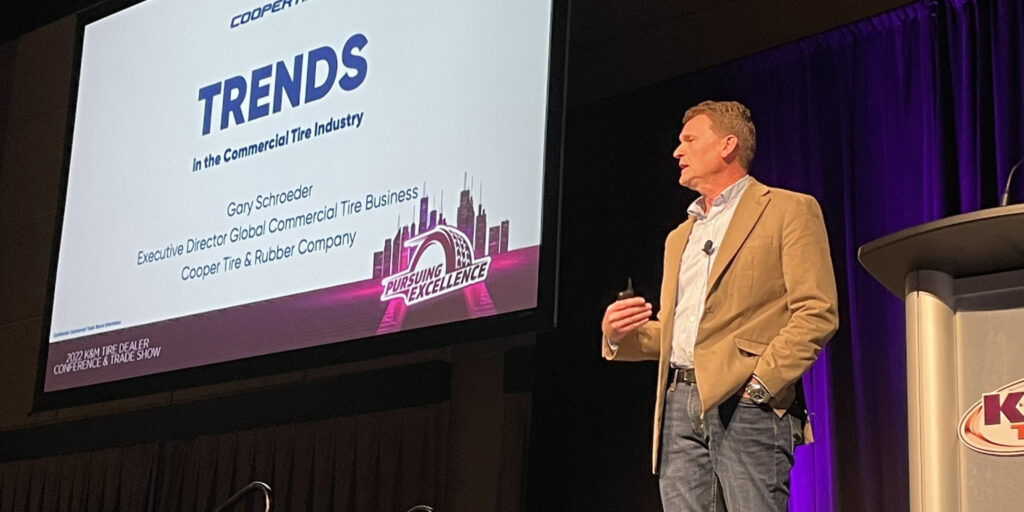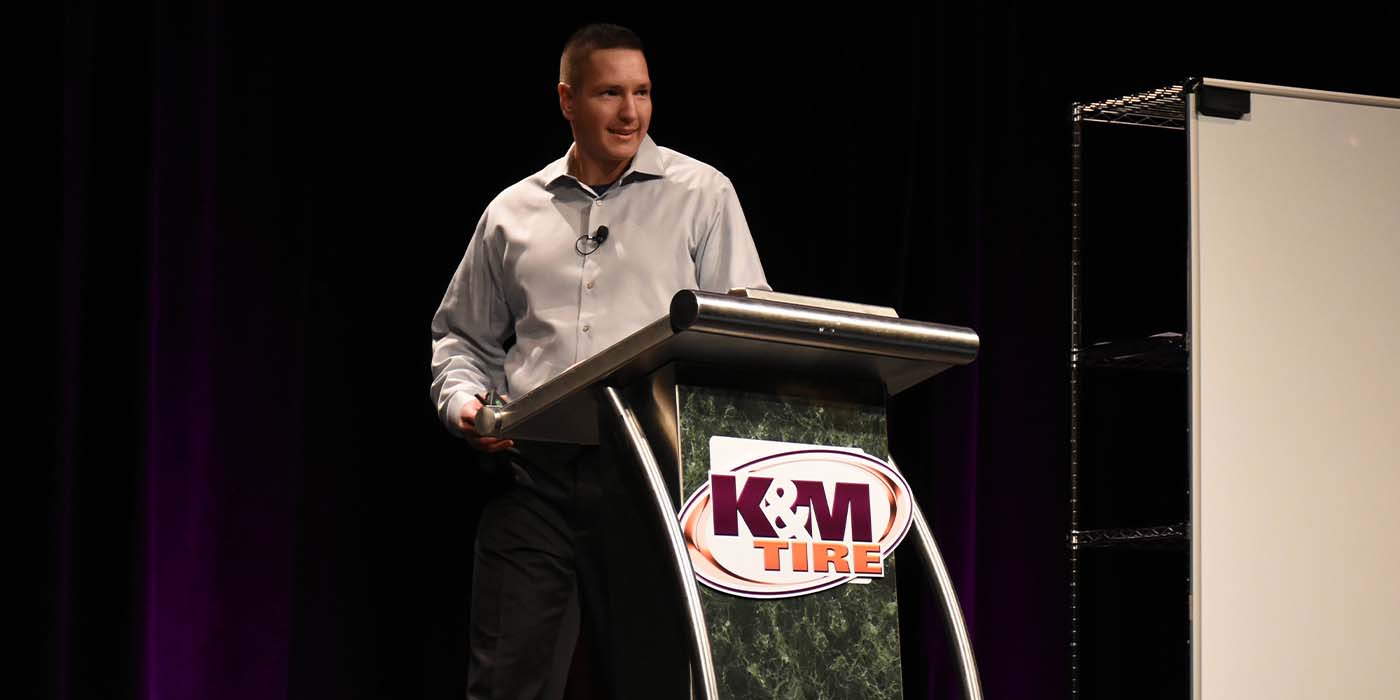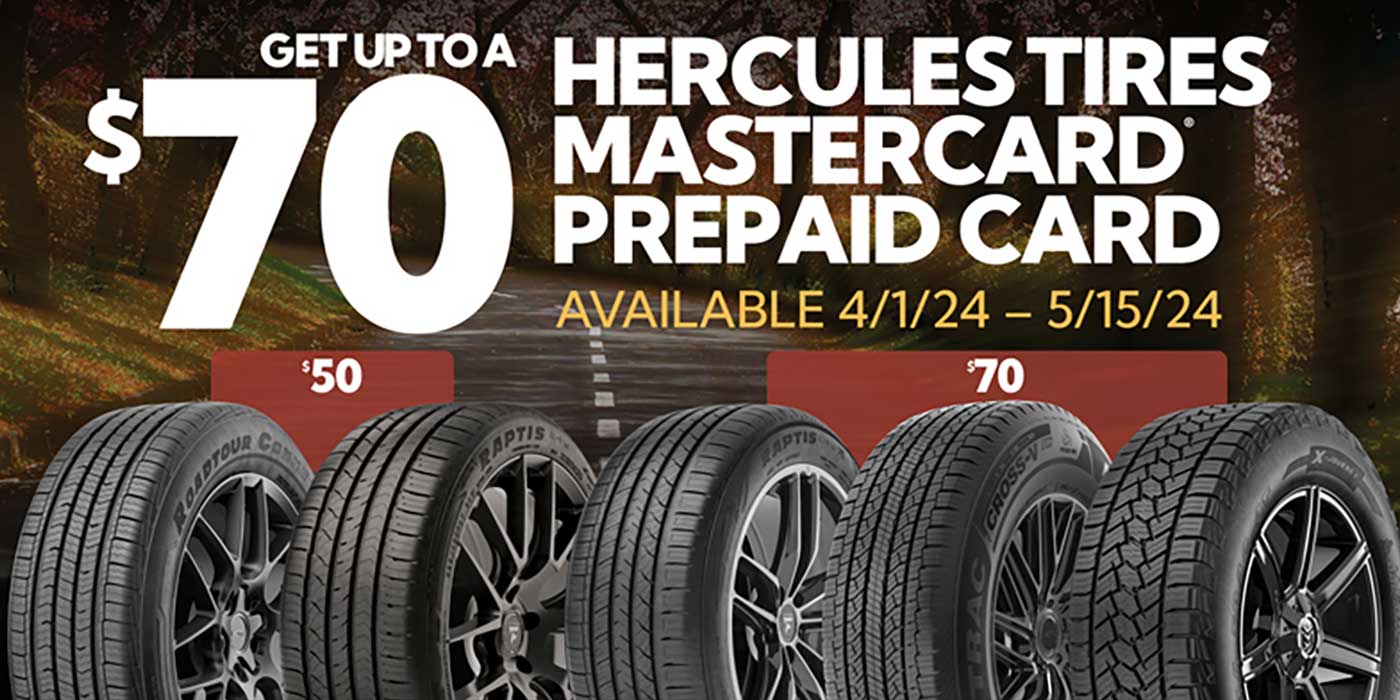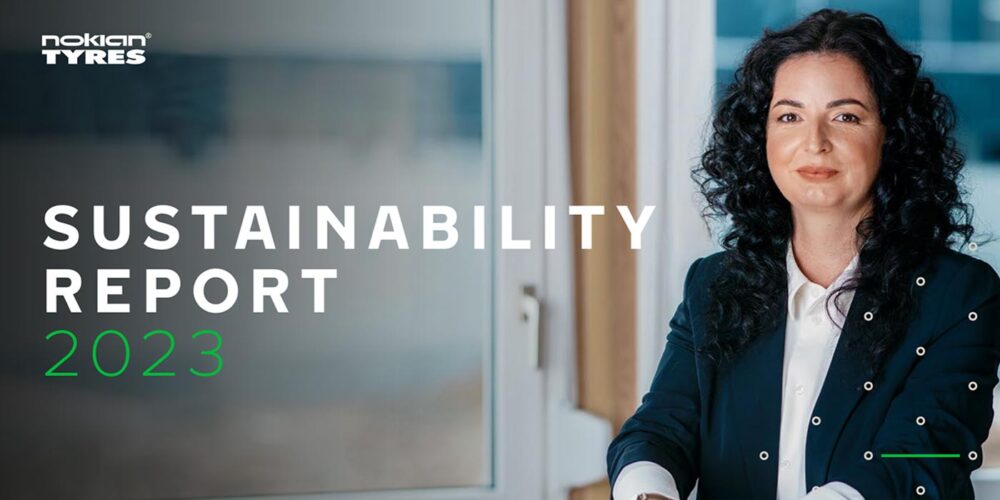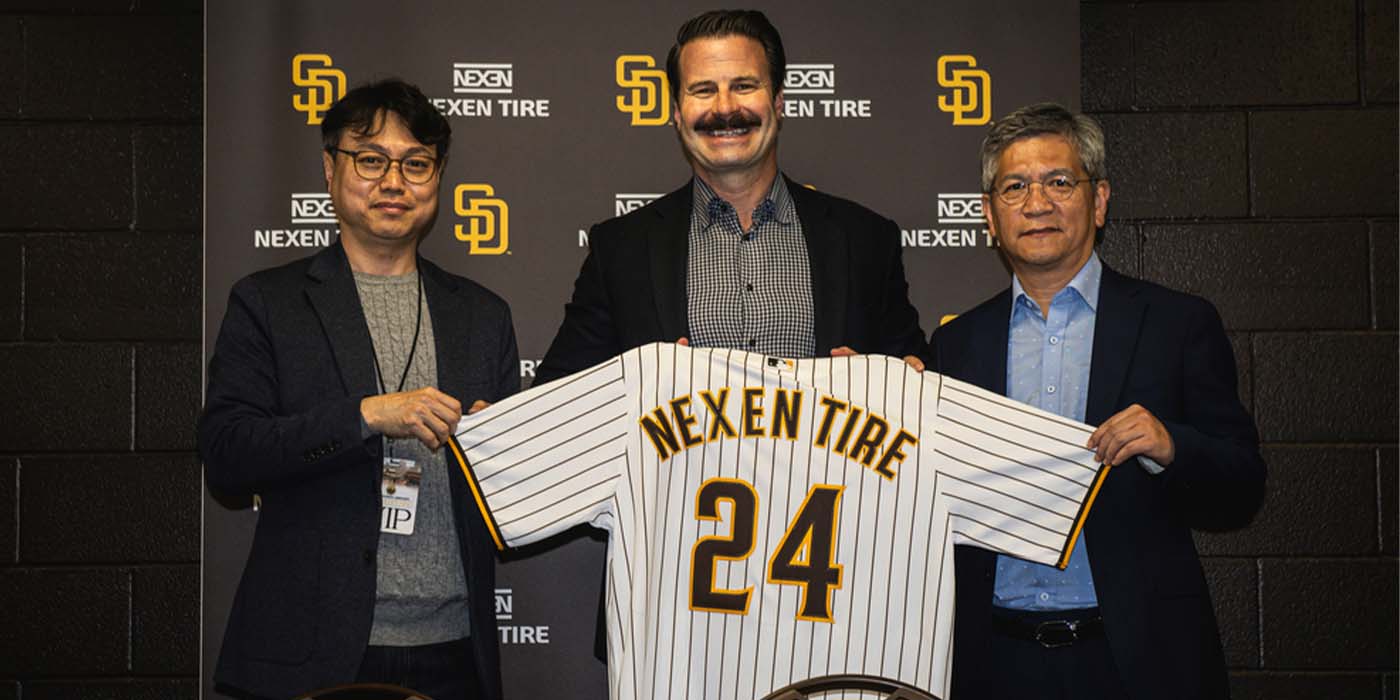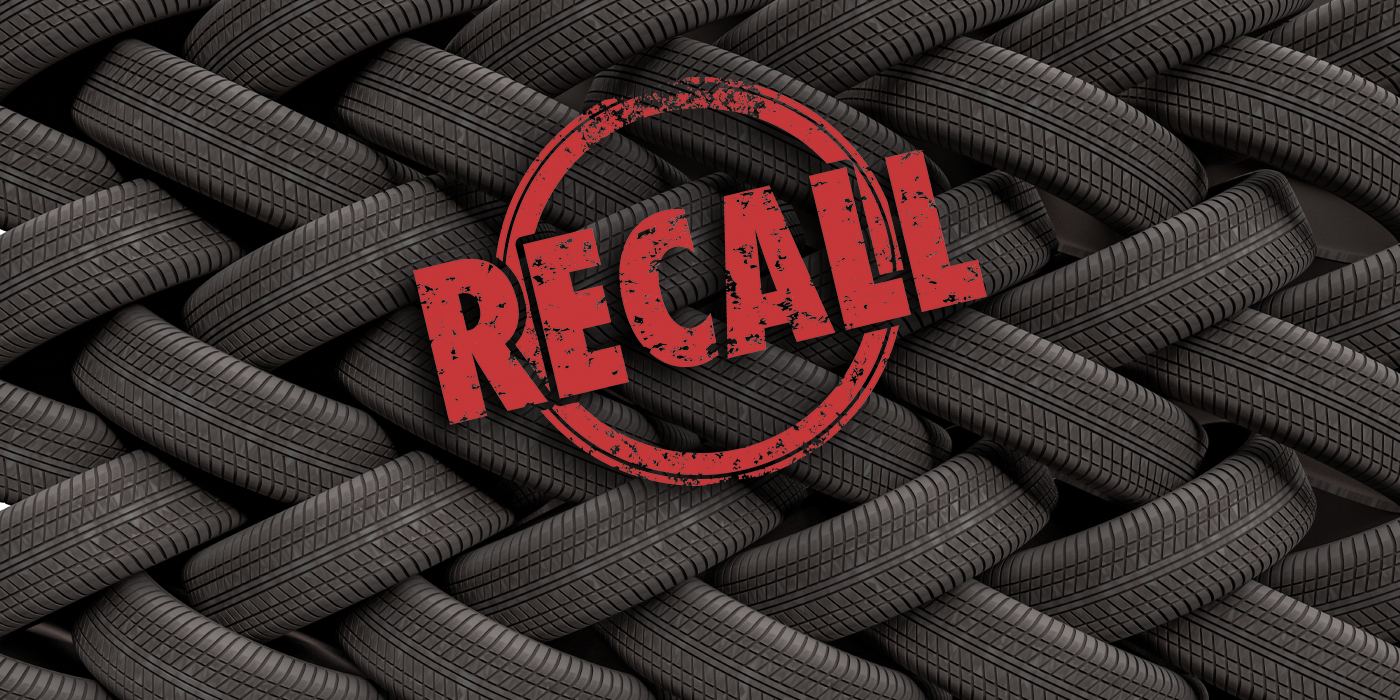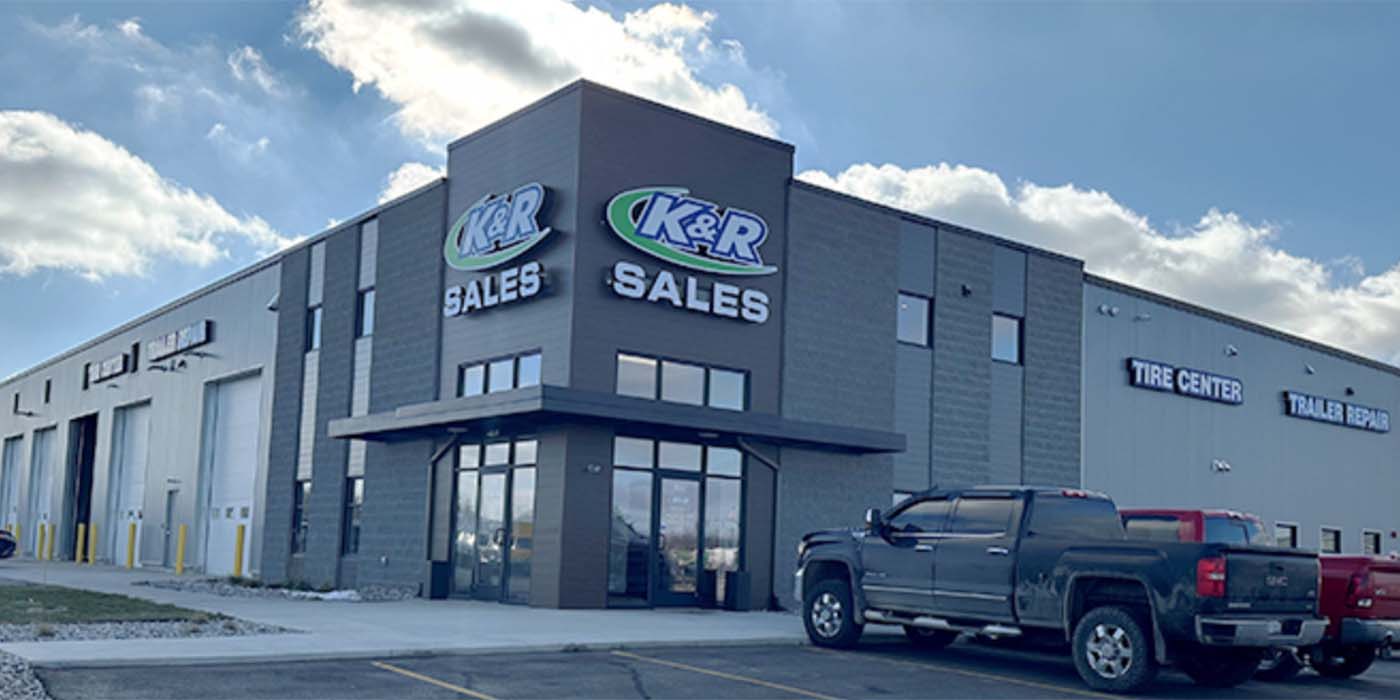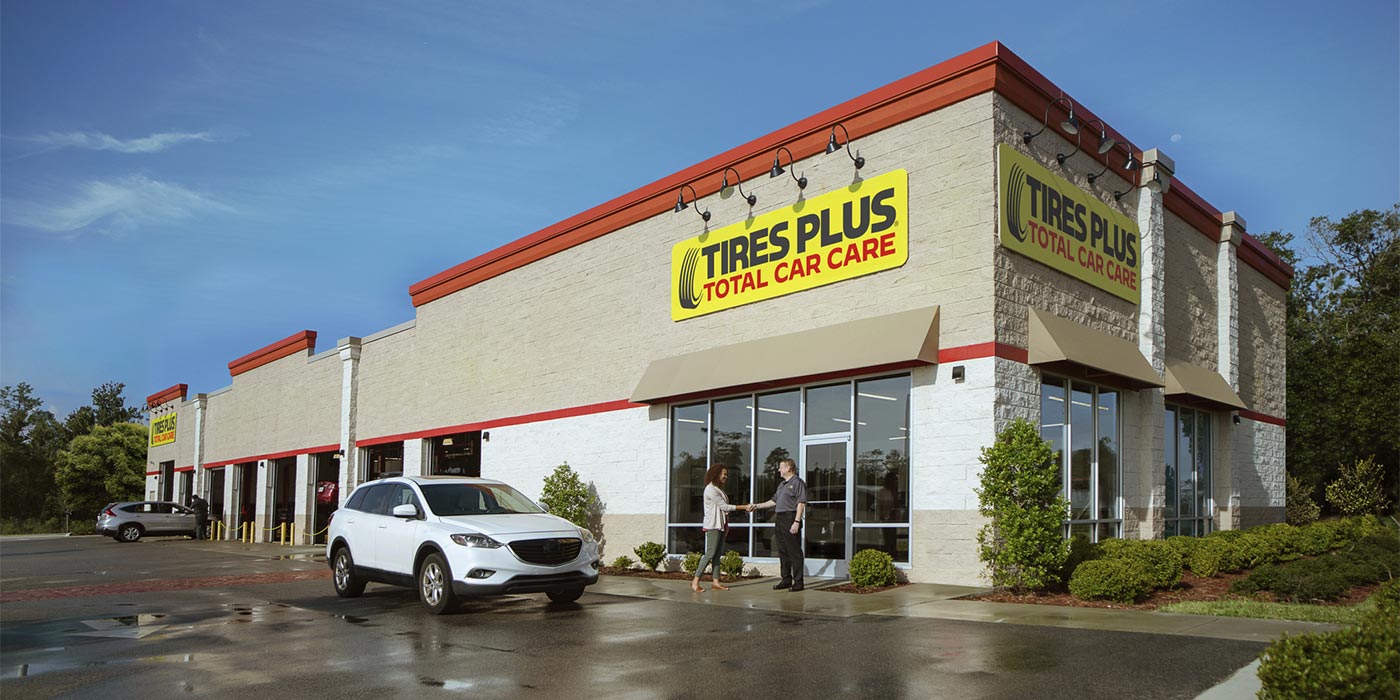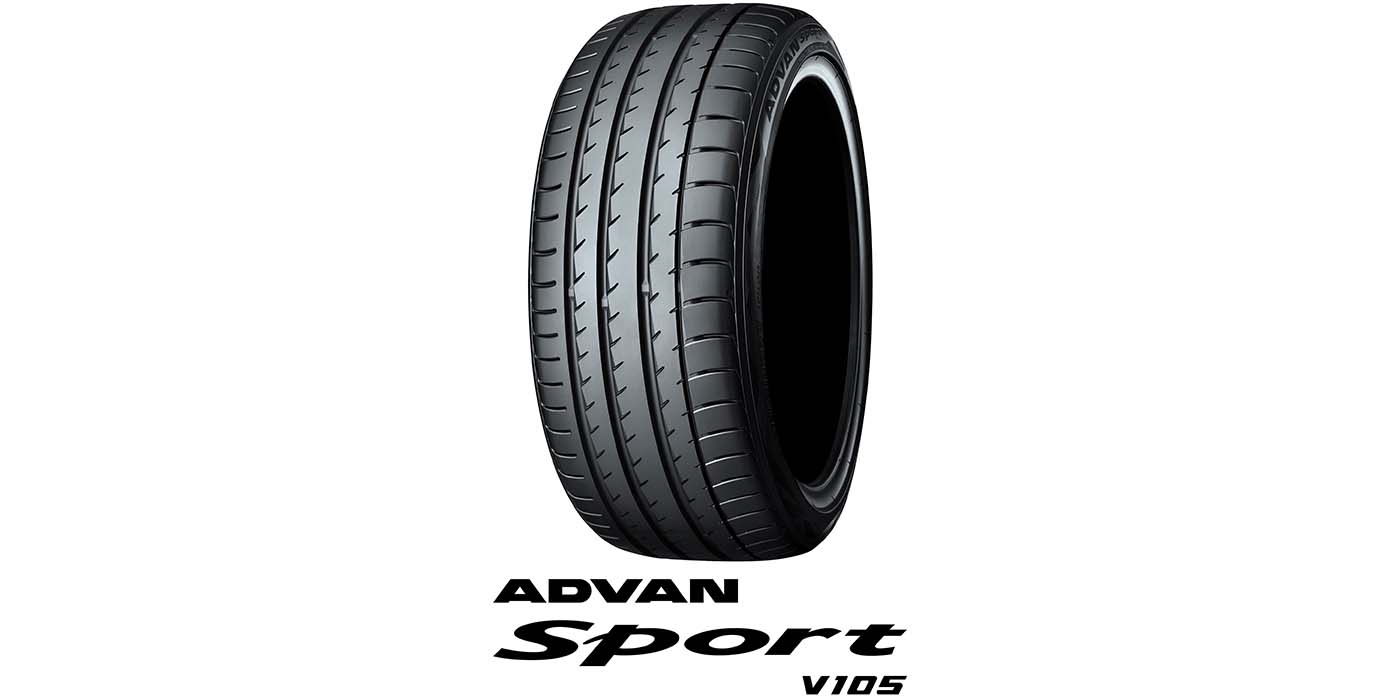Studying commercial truck tire trends is a talent that Gary Schroeder, Cooper Tire executive director of global truck & bus tires, is perhaps best known for, and dagnabbit, he did it again during his “Trends in the Commercial Tire Industry” seminar at this year’s K&M Tire Dealer Conference & Trade Show in Kansas City, Kansas. During his presentation, he shared his knowledge on four commercial tire topics for dealers to bring back to their businesses and get ahead of the competition.
Infrastructure Spending is Going Way Up
On Nov. 15, 2021, the bipartisan infrastructure bill was signed, promising potentially billions in federal funding to update America’s roadways and more.
“When you think of infrastructure, you usually think of roads and bridges, but it’s a lot more than that. It’s airports, shipping ports, utilities, health care, schools, railways, you name it. Infrastructure is good for us in the trucking industry because [it means moving goods in trucks],” Schroeder said.
With over $75 billion of the infrastructure spend being allocated toward EVs alone, this should create a serious long-term demand for R&D in new commercial tire technology, Schroeder said. Public transport will receive a $39 billion boost from the infrastructure spend as well, which should help to grow the public fleets and national account chain.
“There’s a lot of spend now, and it’s all about just moving goods. That means more money is spent on trucks, and that means they’re going to burn through tires quicker,” he said. “And that means we’re going to see more demand for our products out there.”
Why Tires for Last-Mile Delivery Vehicles are Hot Right Now
Last-mile delivery is projected to be a $90 billion industry by 2025, making it one of the fastest-growing trends in the commercial business. Schroeder said with manufacturers sinking R&D dollars into solutions to accommodate the growth of last-mile deliveries, it’s safe to say that last-mile delivery is here and now.
“I was really shocked to hear this, but regarding the total cost of getting a product from the manufacturer to your home, they say that roughly half the cost is getting it from the final distribution center to your home,” Schroeder said. “As more and more freight companies are investing in these last mile capabilities, they’re figuring out more and more ways to drive that cost down, and tires are a big cost for them. Typically, it’s fuel first, tires second.”
He said preparing for the new business means staying up to speed with the products being manufactured to help fleets with last-mile service and bottom-line profitability.
Schroeder said tire dealers should consider increasing their inventory of 16-, 17.5- and 19.5-in. tires to accommodate these vehicles, especially 19.5 in., which he said is “growing like crazy.”
“Last mile delivery, it’s a very demanding application, probably only second to waste-haul,” he said. “Very, very high on start-stop, quick acceleration, cut and chip, curb guarding on the tires … as tire manufacturers, on this application we’re going to develop tires that can meet this demand and make sure [tire dealers] have everything they need for this emerging part of the business.”
He also mentioned to keep an eye out for smart tires, which contain attractive features for fleets like sensors that check tire pressure and temperature. In the future, he said, these sensors will be designed to alert the fleet of a tire’s tread depth and ahead of when there could be a potential maintenance problem.
Schroeder also discussed the arrival of drones, which he said are expected to double within the next five years.
“UPS is experimenting with a truck that has multiple drones on top of it,” he said. “It will reduce the number of miles driven if you have drones deliver your packages.”
Electric Trucks Are Here – And They Just Keep Coming
Schroeder said much like bias ply tires turning into steel-belted radial tires, battery electric technology will ultimately yield a better product and better solution for the commercial industry’s needs.
“One thing that’s safe to say is that electric trucks are coming. Ninety percent of fleet managers describe the future use of electric vehicles in the commercial fleet business as ‘Inevitable,’” he said. “But these vehicles have obstacles to overcome. They have a high upfront price, and if you’re a fleet making the switch from electric from internal combustion engine there’s a significant capital expenditure to do that. Maintenance and repair costs are a little bit of an unknown. There’s the range of the truck. And there’s the charging infrastructure which really doesn’t exist today.”
From a tire manufacturing perspective, manufacturers have to worry about compensating for heavier vehicles due to large batteries. These vehicles also have extra torque and can have a reduced noise level, meaning tires must be manufactured to be quieter as well.
For tire dealers, Schroeder suggests one of the biggest challenges will be a massive expansion of SKUs that will need to be carried.
“Will we have to carry more inventory? More SKUs will be needed to cover both types of vehicles,” he said. “We’d like to have one-size-fits-all, but it just doesn’t happen like that all the time.”
Supply and Demand
The general forecast as of right now looks like demand will be bullish in 2022, Schroeder said.
After a very strong 2021, the consensus seems to be about 3-5% growth in the replacement markets and 8-10% in original equipment markets. These increases equate to an additional one million truck tires or more needed to satisfy demand in 2022 versus 2021.
“To put it in perspective, in 2021, the U.S. truck market consumed about 5.5 million more truck tires than it did in 2020,” he said. “So, tire manufacturers and importers had to come up with that many more truck tires than the previous year.”
As supply overtook demand last year, prices rose not only to compensate for the strains of overwhelming demand, but also to compensate for rising freight and manufacturing costs.
Schroeder said about half the truck tires sold in the U.S. are made in the U.S., and just under 50% are imported.
“There’s a finite capacity to make truck tires in the US.,” he said. “There have a couple of plants here and there in the last couple of years, but other than that, there hasn’t been much capacity added in the U.S. If the market continues to go up and if new tires are needed, they have to be imported into the country.”
Schroeder said only three or four years ago, the majority of imported tires came from China, but tariffs have diminished that number greatly. Today, Thailand is the No. 1 importer of tires to the U.S., followed by Vietnam, Japan, Canada, then China.
Given challenging inventory positions amongst both manufacturers and dealers, increased demand in 2022 will present challenges. Schroeder’s suggestion is to be prepared for continued lean supply in 2022.

